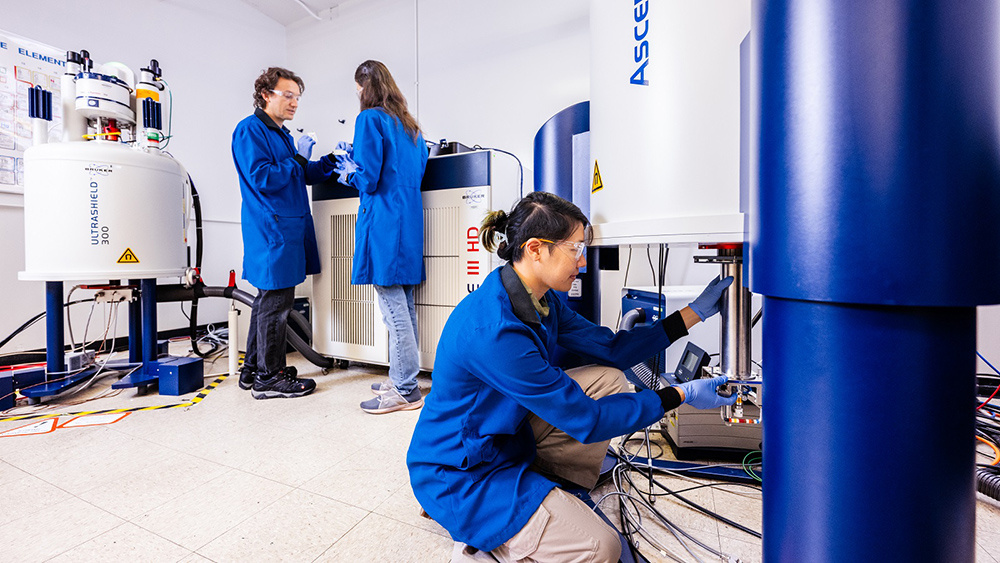
Researchers at the DOE’)’s Argonne National Laboratory have demonstrated a novel method that uses nuclear magnetic resonance (NMR) spectroscopy to characterize the chemical evolution inside battery cells over years of operation.
The technique characterizes chemical degradation in commercial-grade pouch battery cells while they operate for long periods.
NMR spectroscopy relies on magnetic properties of atomic nuclei to study the chemical environments in a sample. A radio-frequency field is applied to a sample immersed in a strong magnetic field, causing the sample to absorb energy. The radio-frequency field is then removed, and a probe measures the energy released when the nuclei return to their lower energy state.
In the Argonne study, researchers developed and applied the NMR spectroscopy technique to observe the fate of lithium atoms in silicon-anode cells as they were charged and discharged, then allowed to rest over seven months.
Argonne’s Cell Analysis, Modeling and Prototyping facility fabricated the cells using a process comparable to commercial battery manufacturing. The research team discovered that after the cells charged, many lithium atoms were trapped in the anode.

During discharge, lithium atoms remained in the anode in the form of lithium silicides rather than being removed and transported to the cathode. The trapped lithium silicides accumulated in the anode, depleting the total amount of lithium available for cycling the cells and reacting with the electrolyte. The trapped molecules and reactions contributed to reductions in the cell’s energy-storage capacity.
The Argonne team also found that adding a magnesium salt to the electrolyte decreased the amount of trapped lithium silicides. These findings could inform new lines of research to identify different chemical additives, electrolyte formulations and silicon materials that can limit the formation of trapped lithium silicides.
Argonne’s new NMR capability is available for use by battery researchers and manufacturers. A key advantage of NMR spectroscopy is that it is highly sensitive to the behavior of light elements like lithium, silicon, carbon and hydrogen that other characterization methods cannot easily probe. This means the new NMR methods can easily be applied to other emerging battery technologies like sodium-ion and solid-state. They can also probe aging in other battery components like cathodes and electrolytes.
“The application of NMR to batteries has been limited to date,” said Baris Key, an Argonne chemist and one of the study’s authors. “But with our powerful new capability, I hope that it will become bread and butter for researchers and manufacturers who want to probe the long-term evolution of their batteries without opening them up. We can study technologies that are already or nearly commercialized.”
The research was supported by the DOE’s Vehicle Technologies Office. A paper on the subject titled “Operando NMR characterization of cycled and calendar aged nanoparticulate silicon anodes for Li-ion batteries” was published in the Journal of Power Sources. Besides Key and Wang, authors include Marco Rodrigues, Sohyun Park and Fulya Dogan Key.
Source: Argonne National Laboratory
from Charged EVs https://ift.tt/wfLWmZE


No comments:
Post a Comment